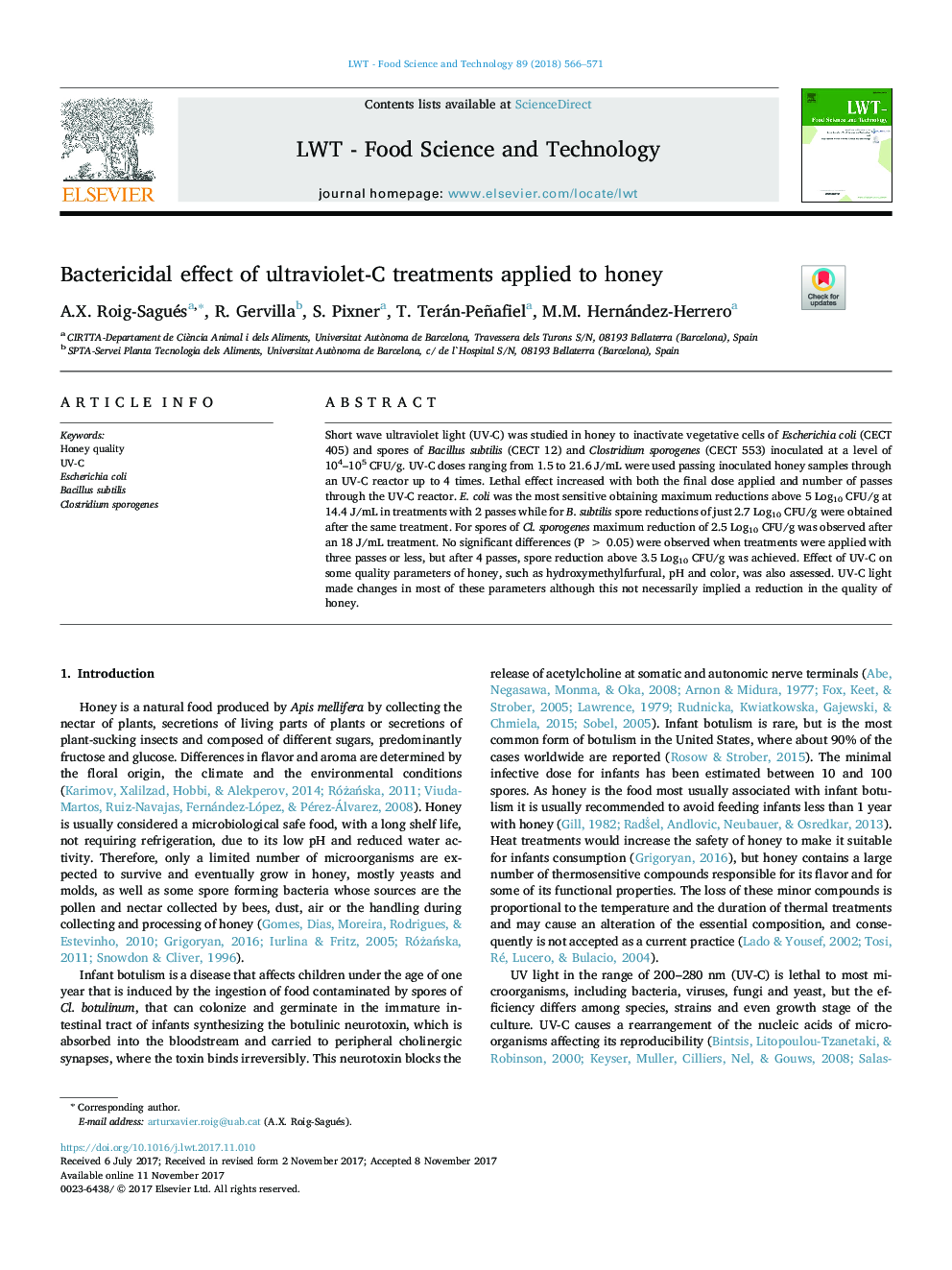| Article ID | Journal | Published Year | Pages | File Type |
|---|---|---|---|---|
| 8892042 | LWT - Food Science and Technology | 2018 | 6 Pages |
Abstract
Short wave ultraviolet light (UV-C) was studied in honey to inactivate vegetative cells of Escherichia coli (CECT 405) and spores of Bacillus subtilis (CECT 12) and Clostridium sporogenes (CECT 553) inoculated at a level of 104-105Â CFU/g. UV-C doses ranging from 1.5 to 21.6Â J/mL were used passing inoculated honey samples through an UV-C reactor up to 4 times. Lethal effect increased with both the final dose applied and number of passes through the UV-C reactor. E. coli was the most sensitive obtaining maximum reductions above 5 Log10Â CFU/g at 14.4Â J/mL in treatments with 2 passes while for B. subtilis spore reductions of just 2.7 Log10Â CFU/g were obtained after the same treatment. For spores of Cl. sporogenes maximum reduction of 2.5 Log10Â CFU/g was observed after an 18Â J/mL treatment. No significant differences (PÂ >Â 0.05) were observed when treatments were applied with three passes or less, but after 4 passes, spore reduction above 3.5 Log10Â CFU/g was achieved. Effect of UV-C on some quality parameters of honey, such as hydroxymethylfurfural, pH and color, was also assessed. UV-C light made changes in most of these parameters although this not necessarily implied a reduction in the quality of honey.
Related Topics
Life Sciences
Agricultural and Biological Sciences
Food Science
Authors
A.X. Roig-Sagués, R. Gervilla, S. Pixner, T. Terán-Peñafiel, M.M. Hernández-Herrero,
